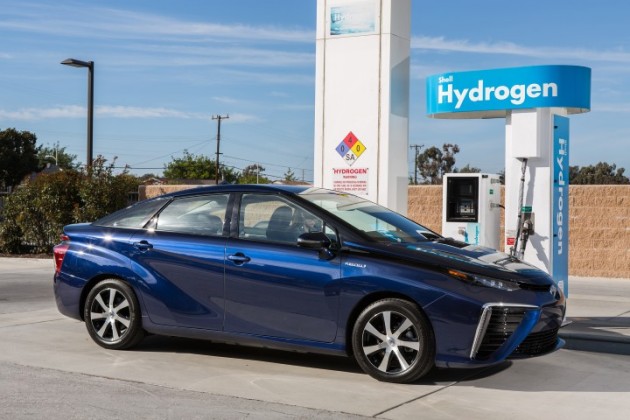Hydrogen Car Technology May Be in Peril, Report Predicts
It seems to be the general consensus nowadays that, at some point, zero-emission vehicles are going to become the norm. However, what most people don’t see as they stare in awe at the new Tesla electric car is that non-gasoline cars are split into two main, distinct camps, and as they each struggle to gain traction, the rise of one could result in the suppression of the other.
On the one hand, you have what are called “BEVs,” or Battery Electric Vehicles. These are the most common, as they store their energy in a battery pack which is recharged and expended to drive the car. These could be your electric-only car like the Tesla Model S, a plug-in hybrid that uses a gas engine to extend range like the Chevy Volt, or an integrated hybrid which uses electric motors to increase the gas motor’s efficiency, like the Toyota Prius.
Unfortunately, BEVs have problems with charging times, which can range from 30 minutes at a fast-charging station to several hours when plugged into a home outlet.
On the other hand, you have Hydrogen Fuel Cell cars. These vehicles use a store of Hydrogen gas, combined with air, to generate electricity which drives the car, like the Toyota Mirai. Cars like this can’t exactly say that they have no exhaust substances, but that’s only because the chemical reaction between the air and the hydrogen does have one particular by-product: water. Refueling on hydrogen is the most similar to what gas-car drivers are used to as it only takes a few minutes to fill up at a pump.
Both have their merits and drawbacks, but a new report by IHS Automotive predicts that, unless something changes, hydrogen-powered vehicles will still only amount to about 70,000 sold globally by 2027—that’s about 0.1% of all new vehicles sold and about equal to the number of full-size pickups Ford sells in one month in the United States.
So, what is holding hydrogen back? Basically, the answer is cost of infrastructure. Hydrogen refueling stations are very expensive to build, and so most of the hydrogen stations are in California, where there are now a whopping 16 fueling stations. Comparatively, the US has about 9,000 public electric charging stations, and BEV range is only rising.
So, the report notes, for hydrogen cars, “this is a now-or-never situation,” as the technology faces a shrinking window of opportunity.
News Sources: USA Today, The Guardian

The News Wheel is a digital auto magazine providing readers with a fresh perspective on the latest car news. We’re located in the heart of America (Dayton, Ohio) and our goal is to deliver an entertaining and informative perspective on what’s trending in the automotive world. See more articles from The News Wheel.


